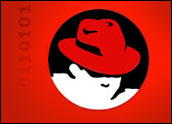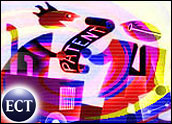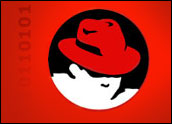
Microsoft is making broad changes to its technological and business practices in an effort to make its most popular products more open and interoperable with those from other vendors.
Driven by industry changes, competitive pressures and legal realities, Microsoft laid out a variety of moves designed to make Windows and other products work better with non-Microsoft software, saying it would make freely available a slew of code it has previously treated as valuable intellectual property and carefully guarded trade secrets.
“We are announcing fairly broad changes to our to technology and business processes meant to increase the openness and interoperability of our products,” said CEO Steve Ballmer. “Our success depends on our ability to provide a platform that is open, flexible and provides choice.”
EU Pressure
The moves cover four main areas: creating more open connections in Microsoft’s most popular products; increasing data portability; offering greater support for industry standards; and working actively to foster more engagement with the software and open source development communities.
The moves reflect a number of industry and technology changes, but are also a nod to regulatory demands, especially from the European Union, which has been pressing Microsoft hard to open up its code to third parties, the company said.
“Microsoft is committed to taking all necessary steps to ensure we are in full compliance with European law,” said General Counsel Brad Smith. “We are taking responsibility for implementing the principles” of interoperability required by the European Union, he added.
30,000 and Counting
The first and most concrete move announced is to offer free Web-based accessed to key APIs (application programming interfaces) and communications protocols in Windows Vista and related products.
That move began with the release of 30,000 pages of documentation related to client and server protocols that enable Microsoft Windows products to interact and communicate with other Microsoft products. Previously, much of that data could only be accessed through a fee-based trade secrets licensing program, Ballmer said.
Thousands of pages more of documentation would be forthcoming in the next several months, Microsoft commented.
A Piece of the Puzzle
While regulatory pressure drove some of the detailed moves, the changes are just the visible part of “one of the biggest fundamental changes in Microsoft since it became a major player,” Enderle Group Principal Analyst Rob Enderle told LinuxInsider.
“This truly is the early face of what will eventually emerge as the new Microsoft,” Enderle said, adding that behind the scenes is a massive changing of the guard in which old-line Microsoft employees and executives are being replaced by new ones.
The highest profile example of that shift may be the ascension of Ray Ozzie to the position of chief software architect held by Bill Gates until he steps back later this year. Ozzie has been focused on collaboration and Web-based tools throughout his career, while Gates’ career began when software was built to work on a single machine or localized network.
“The regulatory actions helped drive the power shift, but now it has a life of its own,” Enderle added. “Ozzie is now fully stepping into a major portion of Gates’ role and that too will define a very different future Microsoft. I actually think people will like this new Microsoft a lot more.”
The economic implications of the shift was a major focus of the conference call. Microsoft had not changed its view that its software code remains intellectual property with massive economic value, Ballmer commented.
“We have valuable intellectual property in our patents and we will continue to consider it valuable,” he added.
The New Microsoft
For his part, Ozzie said the fact that many people now rely on the Internet to make documents portable and are concerned about issues such as document longevity, increasing document portability is a necessary business strategy.
“Every network and system has become interconnected because of the Internet,” he said.
Microsoft has made moves toward interoperability in the past, Yankee Group analyst Laura DiDio told LinuxInsider. For instance, in 2006, it struck an agreement with Novell to enable Microsoft products to work with that company’s open source offerings.
“The European Union definitely has been pushing Microsoft in this direction, but the marketplace is drawing it that way as well,” DiDio said. The challenge for Microsoft will be to adapt to the new market realities, where it will has given competitors for non-core products a more level playing field to compete against it.
While the moves are at least in part a nod to the requirements of the European Commission and Microsoft’s failed efforts to get a court to overturn a regulatory ruling requiring it to open its communication protocols to third parties, the commission expressed skepticism about whether the software giant would actually walk the walk on openness and interoperability.
“The commission would welcome any move towards genuine interoperability,” it said shortly after Microsoft announced its plans. “The commission notes that today’s announcement follows at least four similar statements by Microsoft in the past on the importance of interoperability.”
‘New Opportunities and Risks’
The moves will not impact the recently launched investigations into Microsoft, one of which deals directly with the issue of interoperability, the commission said.
However, Microsoft is committed to doing more than just talking about openness and pointed to the thousands of pages of documents being made available, Smith said. He also expressed confidence the steps would help Microsoft meet its competition requirements around the world.
“These steps are being taken on our own,” Ballmer added. “They reflect the reality of unique legal situation but also new opportunities and risks in the more connected world.”





















































